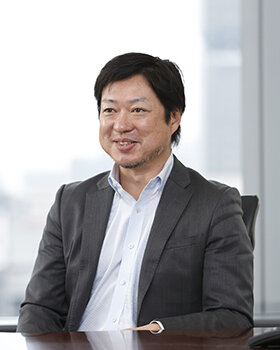Media Foreign Affairs and National Security 2017.11.21
Why Japan should be OK with tactical nukes in South Korea
North Korea's advancement of nuclear and missile programs has sparked a debate, in South Korea and between the United States and South Korean officials, about the reintroduction of tactical nuclear weapons in South Korea. While South Korean President Moon Jae-in has denied pursuing such an option, the Liberty Korea Party, the main opposition party, has formally endorsed it, reflecting growing public sentiment in the country in favor of the deployment of nonstrategic nuclear weapons.
The U.S. withdrew from South Korea all of its forward-deployed tactical nuclear weapons in 1991, which led to North and South Korea signing the Joint Declaration on the Denuclearization of the Korean Peninsula in 1992. Since then, while the offshore nuclear extended deterrence that the U.S. offered to South Korea remained intact, the superiority of the conventional military capability of U.S. and South Korea over North Korea constituted an essential component of deterrence and defense.
However, the recent development and sophistication of North Korea's nuclear and missile capabilities that include the potential deployment of intercontinental ballistic missiles have triggered an open debate about reassessing South Korea's defense posture, including its nuclear options. The reintroduction of tactical nuclear weapons on South Korean soil, under the control of the U.S. military, is one of the most reliable, though highly controversial, options that the U.S. and South Korea could choose.
In practice, the only remaining U.S. tactical nuclear weapon currently deployable to the Korean Peninsula is the B-61 bomb, which can be delivered by B-2 bombers, F-15 and F-16 fighters. (F-35 dual capable aircraft, or DCAs, are expected to become the next-generation delivery platform.) If these assets are forward-deployed in South Korea, proponents would regard them as a strong deterrent and a reassuring alliance commitment to South Korea by having a rapid and customized nuclear response capability vis-a-vis North Korea. Opponents of redeployment, however, would counter that such a reintroduction would have little operational benefit and instead would increase North Korea's incentive to strike first at nuclear assets in South Korea, thus dramatically weakening crisis stability.
While the pros and cons should be carefully assessed, if Seoul and Washington jointly decide in favor of reintroduction, here are four reasons why Tokyo should strongly offer its support.
First, the U.S. forward-deployed tactical nuclear weapons in South Korea would become an essential component for preventing the decoupling of the alliance. North Korea's soon-to-be-ready ICBM capability would raise allies' doubts over U.S. resolve to launch a nuclear counterstrike at the expense of U.S. homeland vulnerability - a classic case of decoupling. The reintroduction of U.S. tactical nuclear weapons in South Korea would signal a powerful deterrent to North Korea and reassure South Korea of the U.S. commitment. It would represent the indivisibility of the U.S.-South Korea alliance and thus close the window of opportunity for decoupling.
Second, the forward deployment of tactical nuclear weapons would enhance the capability of the U.S.-South Korea alliance for seamless escalation control and war-fighting in the nuclear domain. As North Korea develops multiple types of delivery platforms that enable nuclear blackmail in the early phase of a crisis, South Korea must prepare a proportional capability to manage the escalation. Especially, the ability to launch precise, low-yield nuclear counterforce strikes are an essential component for flexible deterrence. This capability can also work together with the Kill Chain system of defense and the Korea Massive Punishment and Retaliation in South Korea's defense platform.
Third, tactical nuclear weapons in South Korea would further strengthen the U.S. nuclear posture tailored to Asia. Among traditional "triad" nuclear forces (ICBMs, strategic bombers and submarine-launched ballistic missiles), the U.S. nuclear posture in Asia takes into account the significant importance of air assets including B-52 and B-2 bombers from Andersen Air Force Base on Guam. Their rotational presence during the U.S.-South Korea joint military exercise represented a strong signaling of U.S. nuclear commitment in Northeast Asia. However, such long-range bomber operations will likely be exposed to China's growing anti-access environment in the Western Pacific in coming decades. China's expanded air defense with anti-stealth capability beyond the first island chain will impose a high cost on U.S. forces' operational access in Northeast Asia. To ensure a credible and tailored U.S. nuclear posture in Asia, in-theater deployment of DCAs will significantly enhance the credibility of the nuclear commitment and operational readiness.
Fourth, in the longer run, the deployment of tactical nuclear weapons in South Korea could potentially provide bargaining leverage in North-South arms control negotiations. At this moment, North Korea is not interested in talks on denuclearization and is determined to obtain a sufficient nuclear deterrent against the United States. But achieving sufficient deterrence is still a long-term goal for North Korea given the preponderant nuclear and conventional strike as well as missile defense capability of the U.S. and its allies.
North Korea, at some point in the future, may begin to think that its security cannot be guaranteed by its own nuclear weapons development and would need to be complemented by negotiation. The tactical nuclear weapons standoff on the Korean Peninsula would become a reciprocal tool for joint threat reduction when North Korea intends to begin such negotiations. One can recall the analogy of the 1979 Intermediate-Range Nuclear Forces Treaty, triggered by NATO's double-zero option in dealing with the intermediate missile standoff between Western Europe and the Soviet Union. Pursuing a double-zero option on the Korean Peninsula should be worthwhile in the longer run.
The defense of South Korea is imperative to the security of Japan. So is the U.S. security commitment on the Korean Peninsula. In facing the new dimension of nuclear and missile threats from North Korea, the prescription to reintroduce tactical nuclear weapons is a controversial but reasonable choice for the U.S. and South Korea to make. Japan should be ready to say "yes."
